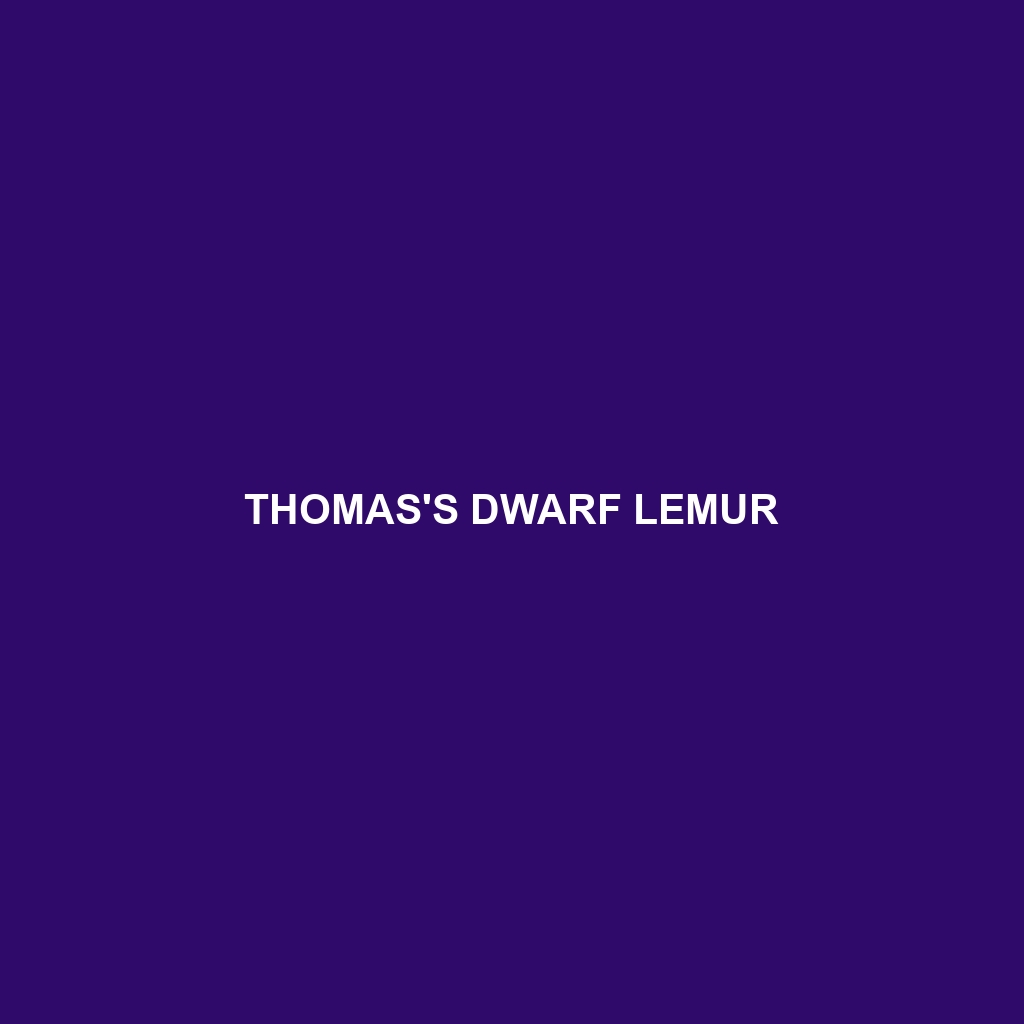Thomas’s Dwarf Lemur (Scientific Name: Cheirogaleus liodies)
Habitat: The Thomas’s Dwarf Lemur primarily inhabits the tropical rainforests of Madagascar, particularly in the northeastern regions of the island. This habitat includes lush vegetation and a humid climate, allowing for a rich diversity of flora and fauna. These lemurs are typically found in both primary and secondary forests, as well as in areas close to rivers, which provide essential resources for their survival.
Physical Characteristics: Thomas’s Dwarf Lemurs are small primates, typically weighing between 700 and 900 grams (1.5 to 2 pounds) and measuring about 24 to 35 centimeters (9 to 14 inches) in body length, excluding their long tails. They possess soft, dense fur that is primarily a grey-brown color, with distinctive patterns of lighter and darker shades. Their large, round eyes provide excellent night vision, an essential trait for their nocturnal lifestyle. One of the most notable features is their small size, which allows them to navigate the dense foliage easily.
Behavior: These lemurs exhibit a nocturnal lifestyle, being most active during the night. They are known for their unique social structure, often living in small family groups. Agile climbers, Thomas’s Dwarf Lemurs spend much of their time in trees, utilizing their long tails for balance. They engage in vocal communication, using a variety of sounds to convey social interactions and warn of potential threats. During the day, they are known to hide in tree hollows or among dense foliage to rest and avoid predators.
Diet: The diet of Thomas’s Dwarf Lemurs consists primarily of fruits, leaves, and flowers, showcasing their role as important seed dispersers within their ecosystem. They have been observed consuming nectar and are known to favor ripe fruits during the fruiting seasons. This frugivorous diet is supplemented with insects, particularly during certain periods when fruits are scarce, showcasing their adaptability in feeding habits.
Reproduction: Thomas’s Dwarf Lemurs have a specific breeding season, typically occurring from September to November. After a gestation period of approximately 60 to 70 days, females give birth to one or two offspring. These young lemurs are weaned by the age of two to three months and begin to exhibit independence at around six months. Maternal care is extensive, with females known to carry their young constantly until they are able to navigate the trees independently.
Conservation Status: The Thomas’s Dwarf Lemur is currently classified as endangered due to habitat loss and fragmentation, primarily caused by deforestation for agriculture and logging. Conservation efforts are critical to protecting their remaining habitats and ensuring the survival of this unique species in Madagascar.
Interesting Facts: One fascinating aspect of the Thomas’s Dwarf Lemur’s behavior is their ability to enter a state of torpor, which allows them to conserve energy during periods of food scarcity. This adaptation helps them survive in their fluctuating environment, making them a remarkable example of resilience in the animal kingdom.
Role in Ecosystem: As seed dispersers, Thomas’s Dwarf Lemurs play a vital role in maintaining the health of their forest ecosystems. By consuming and excreting seeds, they contribute to the growth of new plants, promoting biodiversity. Their interactions with various flora and fauna highlight their importance in the food web, showcasing the intricate balance of life in Madagascar’s unique habitats.
